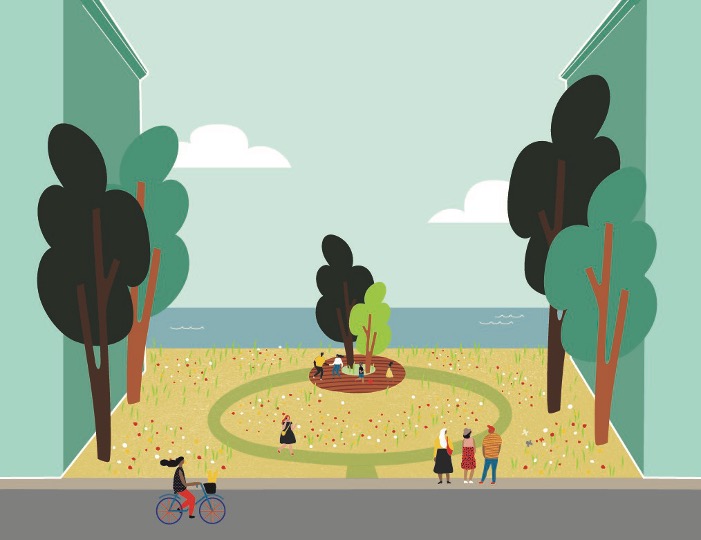
August 5, 2022 – The George Read II House & Gardens, a National Historic Landmark owned and operated by the Delaware Historical Society, has announced a transformative campaign to revivify its grounds, creating a socially, environmentally, and financially sustainable landscape for the next generation. Planning will encompass the entire 2.5 acres of grounds surrounding the 1804 Read House, which is situated within the town’s historic core with substantial Delaware River frontage. Ultimately, the project will reconcile the gardens’ multi-layered history with Old New Castle’s legacy of beautiful design, while centering the Society’s contemporary mission to “educate, inspire, and empower people and communities.”
About Read House & Gardens
The Read House & Gardens site is situated in Lenapehoking, homeland of the Lenape people for tens of thousands of years. Since the 1990s, teams of archaeologists led by Dr. Lu Ann De Cunzo of the University of Delaware have unearthed more than 70,000 objects that reveal a complicated past, including conquest by the Swedish, Dutch, and British empires during the seventeenth century. The present parterre section of the garden was once occupied by the home of George Read I, signer of the Declaration of Independence and Constitution and an early governor, senator, and chief justice of Delaware. From 1766 until his death in 1798, Read joined a century of prior inhabitants in continually improving the house and yard.
As Dr. Emily T. Cooperman confirms in a recent report on the Read House cultural landscape, it cannot easily be defined by one single period of significance. George Read II (1765–1836), longtime U.S. Attorney for the District of Delaware, erected the present Read House next door to his father’s between 1797 and 1804, but landscaping of the grounds remained incomplete during his lifetime. The garden plan that exists today dates generally to 1847–48, when William Couper, a New Castle native who amassed a fortune in the East Asian trade, returned to purchase the property from the Read family. Robert Buist, a prominent Scottish nurseryman in Philadelphia, is understood to have been the designer.
Yet the gardens continued to evolve during the Couper years and again the 1920s, after the Read House was acquired by Philip D. and Lydia Chichester Laird. The Lairds, both cousins of the extensive du Pont family, were inspired by the Colonial Revival movement in transforming the historic house and grounds into a social hub. Hardscape and plantings were altered, the back kitchen garden was replaced with a swimming pool and poolhouse, and a yacht basin was installed at the riverfront. The Lairds went on to lead the efforts to transform New Castle from a declining town into a noted destination for preservation tourism. The Read House, its gardens, and the rest of the town appeared in dozens of mainstream lifestyle publications, such as House & Gardens and Town & Country, during their tenure.
DHS assumed ownership of the property upon Lydia Laird’s death in 1975 and has operated it as a museum since then, undertaking a comprehensive restoration of the house in the early 1980s and a garden restoration in the 1990s and early 2000s. As is inevitable in such projects, the Society made choices as to which existing elements it would preserve and which evidence it would rely on to recreate past elements—eliminating, for instance, the Laird-era swimming pool but retaining their brick hardscape and reintroducing plantings from the 1880s.
DHS and Land Collective have embraced this complexity. In the spirit of past generations, this fresh project offers an opportunity to balance preservation with contemporary needs. With community input, the result is expected to deepen the historical meaning of the Read House & Gardens site for present and future visitors, neighbors, and admirers. For more information, call (302) 655-7161, email rhinfo@dehistory.org or visit www.readhouseandgardens.org.




